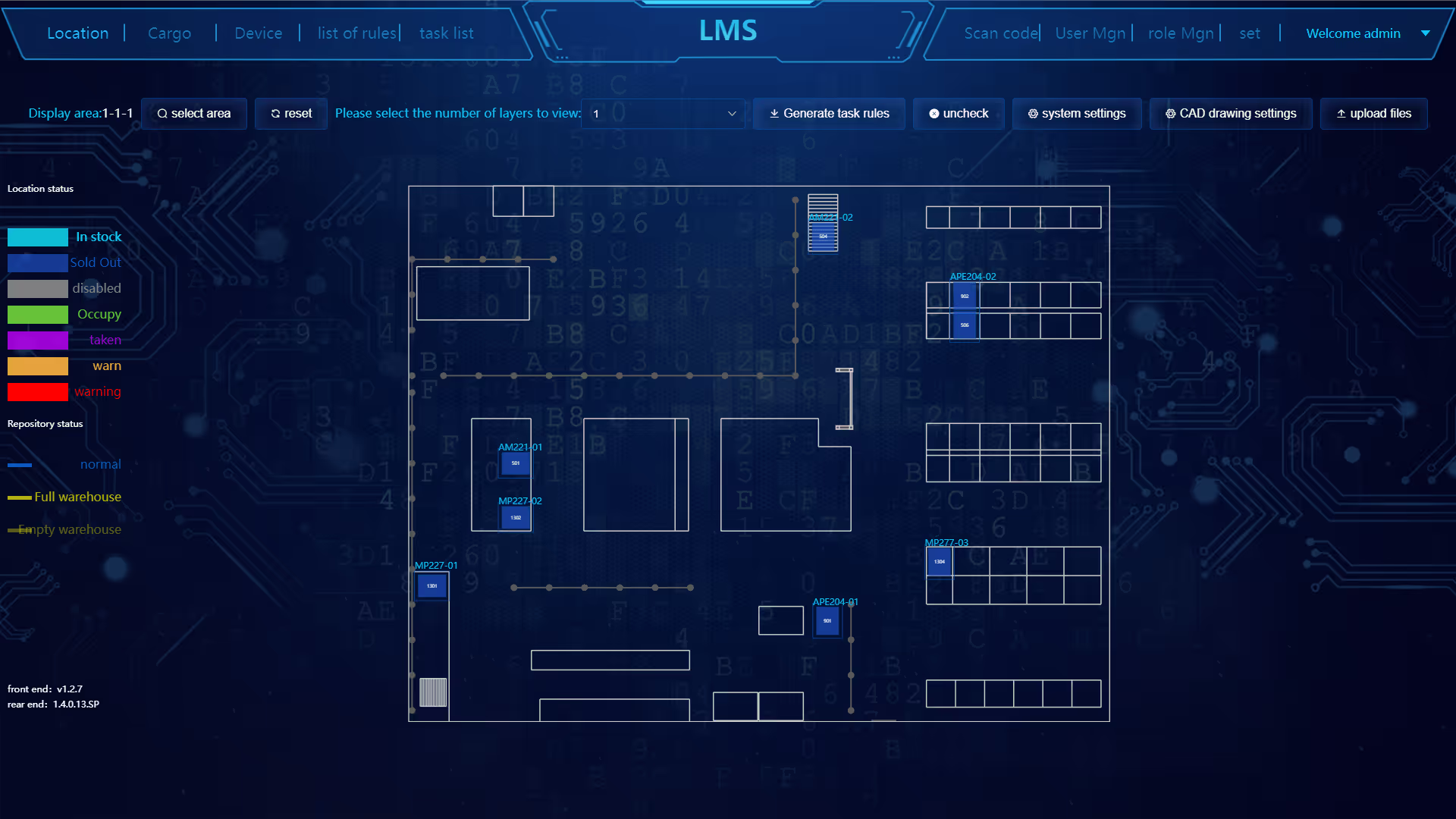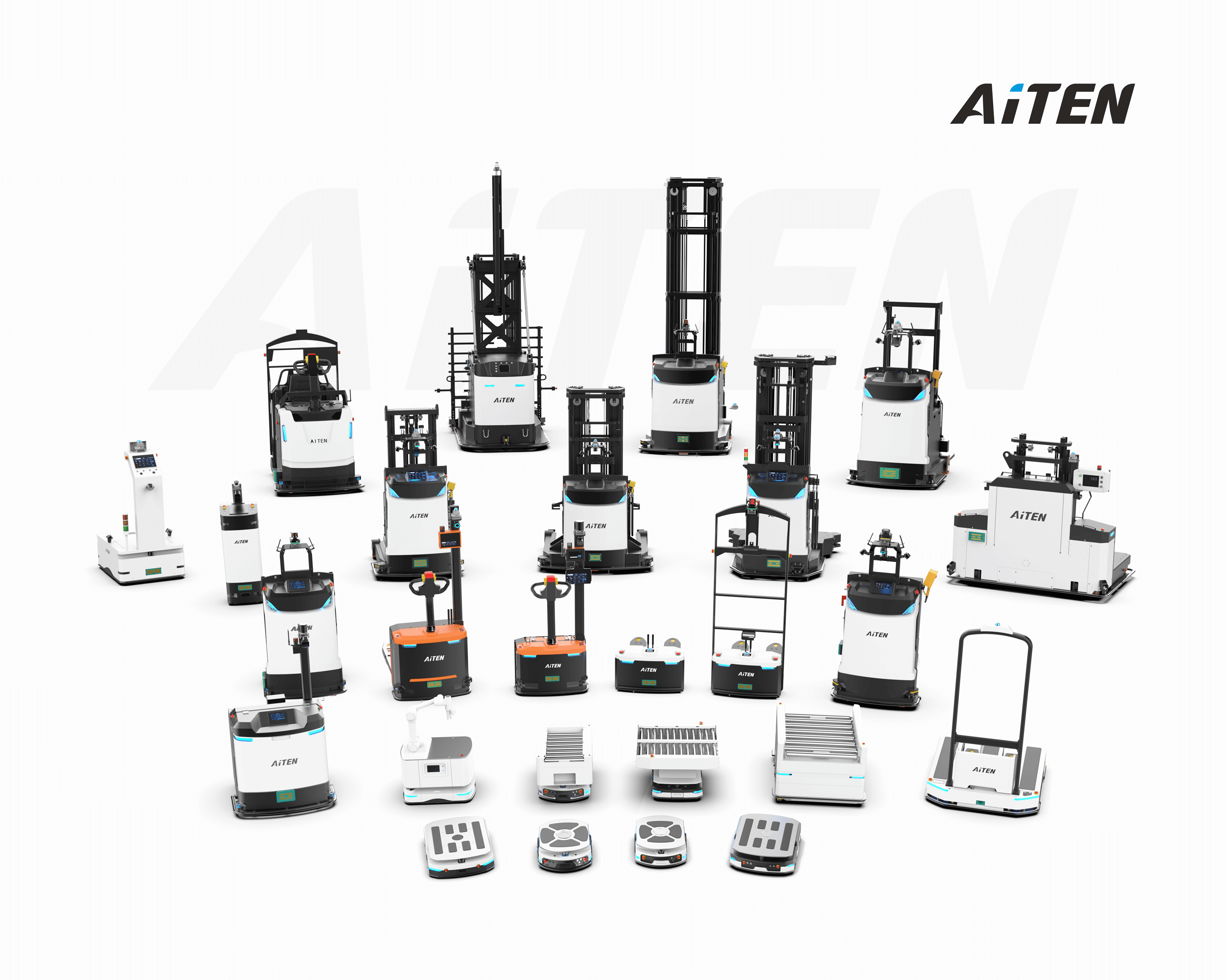무인 지게차: 자재 취급 및 재고 관리의 혁신

끊임없이 진화하는 물류 및 창고의 세계에서 무인 지게차는 보다 효율적이고 자동화된 미래를 향해 나아가는 데 앞장서고 있습니다. 이러한 자율 주행 차량은 단순한 기술적 경이로움을 넘어 산업 전반에 걸친 자재 취급의 판도를 바꾸고 있습니다. 기업과 물류창고에서 운영 효율화를 모색하는 가운데 무인 지게차는 생산성, 안전, 비용 효율성을 향상시키는 유망한 솔루션을 제공합니다.
1. 무인 지게차란 무엇인가요?
1.1 정의 및 기술
자율 지게차 또는 자동화 지게차라고도 하는 무인 지게차는 사람의 개입 없이 자재를 운반하도록 설계된 첨단 기계입니다. 센서, 카메라, 인공 지능(AI)의 조합을 사용하여 자율적으로 탐색하고 작업을 수행합니다. 이러한 지게차는 LiDAR(빛 감지 및 거리 측정) 및 고급 매핑 시스템과 같은 기술을 탑재하여 복잡한 환경에서도 효율적으로 작동할 수 있습니다.
1.2 작동 방식
무인 지게차는 정교한 알고리즘과 실시간 데이터 처리에 의존하여 자재를 이동하고 들어 올립니다. 미리 정해진 경로를 따르거나 동적인 창고 레이아웃에 적응하도록 프로그래밍되어 있습니다. 이러한 기계는 물품 적재부터 보관 구역 간 물품 이동까지 다양한 작업을 처리할 수 있습니다. 다른 시스템 및 디바이스와 통신할 수 있는 기능을 통해 기존 물류 프레임워크에 원활하게 통합할 수 있습니다.
2. 정밀한 처리: 인간의 능력을 뛰어넘다
2.1 효율성 향상
무인 지게차의 가장 중요한 장점 중 하나는 운영 효율성에 미치는 영향입니다. 이러한 지게차는 자재 취급 프로세스를 자동화함으로써 수작업의 필요성을 줄여 상품을 더 빠르고 정확하게 이동할 수 있습니다. 최근 연구에 따르면 자동화된 지게차는 24시간 쉬지 않고 작업할 수 있기 때문에 창고 생산성을 최대 30%까지 높일 수 있다고 합니다.
2.2 안전성 향상
안전은 모든 물류창고 환경에서 중요한 관심사입니다. 무인 지게차는 사고의 주요 원인인 인적 오류를 최소화하여 더 안전한 작업장을 만드는 데 기여합니다. 이러한 자율주행 기계에는 충돌 방지 시스템과 실시간 위험 감지 등의 첨단 안전 기능이 탑재되어 있어 작업장 내 부상과 재산 피해의 위험을 줄여줍니다.
2.3 비용 효율성
무인 지게차에 대한 초기 투자 비용이 높아 보일 수 있지만 장기적으로 보면 상당한 절감 효과가 있습니다. 인건비 절감과 운영 효율성 향상은 상당한 투자 수익률에 기여합니다. 기업은 기존 지게차에 비해 수리 빈도가 적기 때문에 유지보수 비용이 감소하고 전반적인 수익성이 향상될 것으로 기대할 수 있습니다.
AiTEN 사례:
AMK 협궤도 AGV가 첸장냉장의 스마트 팩토리 전환을 지원합니다.
물류 관리가 혼란스러운 자동차 공장의 창고 활용도를 30% 향상시킨 AiTEN의 맞춤형 솔루션
지능형 스케줄링 시스템과 AGV 로봇을 통해 창고 효율 60% 향상 및 부상 제로 달성
3. 재고 관리: 추측에서 데이터 기반 정확도까지
3.1 실시간 재고 업데이트:
LMS(라인 측면 관리 시스템)는 공장 내 재고의 체계적 관리 부족과 무질서한 배치를 해결합니다. 인바운드, 아웃바운드, 재고 등 물류 프로세스를 종합적으로 모니터링하여 정확한 재고를 확보합니다.

3.2 데이터 분석
WCS(창고 제어 시스템)는 고객의 창고 장비와 원활하게 통합되어 단순성과 효율성을 보장하도록 설계되었습니다. 자세한 간섭 분석, 트래픽 흐름 모니터링, 재고 데이터 분석을 수행하여 정보에 입각한 의사 결정과 운영 개선을 지원합니다.
3.3 주문 시뮬레이터
SCP(시뮬레이션 제어 프로그램)는 주문 처리의 시뮬레이션을 용이하게 하여 시스템 내에서 상품과 자재의 흐름을 예측하고 최적화하는 데 도움을 줍니다.
4. 최근 트렌드 및 혁신
4.1 신규 출시
무인 지게차 시장은 여러 가지 새로운 모델과 혁신이 등장하면서 빠르게 확장되고 있습니다. 최근 출시되는 지게차는 배터리 수명 향상, 처리 속도 향상, 다양한 창고 환경에 대한 적응성 향상 등 기계의 기능을 강화하는 데 초점을 맞추고 있습니다.
4.2 파트너십 및 합병
지난 몇 년 동안 물류 및 자동화 부문에서 주목할 만한 파트너십과 합병이 있었습니다. 기업들은 무인 지게차 기술을 재고 관리 및 창고 로봇과 같은 다른 자동화 시스템과 통합하기 위해 협력하고 있습니다. 이러한 협업은 보다 응집력 있고 효율적인 물류 솔루션을 만드는 것을 목표로 합니다.
4.3 업계 채택
무인 지게차의 도입은 소매, 제조, 물류 등 다양한 산업 분야에서 탄력을 받고 있습니다. 주요 기업들은 경쟁력을 유지하고 증가하는 자동화 수요를 충족하기 위해 이 기술에 막대한 투자를 하고 있습니다. 더 많은 기업이 이점을 인식함에 따라 자율 지게차의 사용은 전 세계 물류창고에서 표준 관행이 될 것으로 예상됩니다.
결론
무인 지게차는 향상된 효율성, 안전성, 비용 효율성을 제공함으로써 물류 산업에 혁신을 일으키고 있습니다. 기술이 계속 발전함에 따라 이러한 자율 기계는 전 세계적으로 자재 취급 작업에서 점점 더 중요한 역할을 하게 될 것입니다. 무인 지게차에 투자하면 즉각적인 이점을 얻을 수 있을 뿐만 아니라 빠르게 발전하는 산업에서 미래의 성공을 위한 입지를 다질 수 있습니다.
혁신적인 무인 지게차로 자재 취급 프로세스와 재고 관리를 어떻게 혁신할 수 있는지 알아보려면 지금 AiTEN에 문의하세요.









_%E7%94%BB%E6%9D%BF%201.avif)
.MP10S%E5%8A%A0%E9%AB%98%E6%94%AF%E6%9E%B6%20(3).png)
